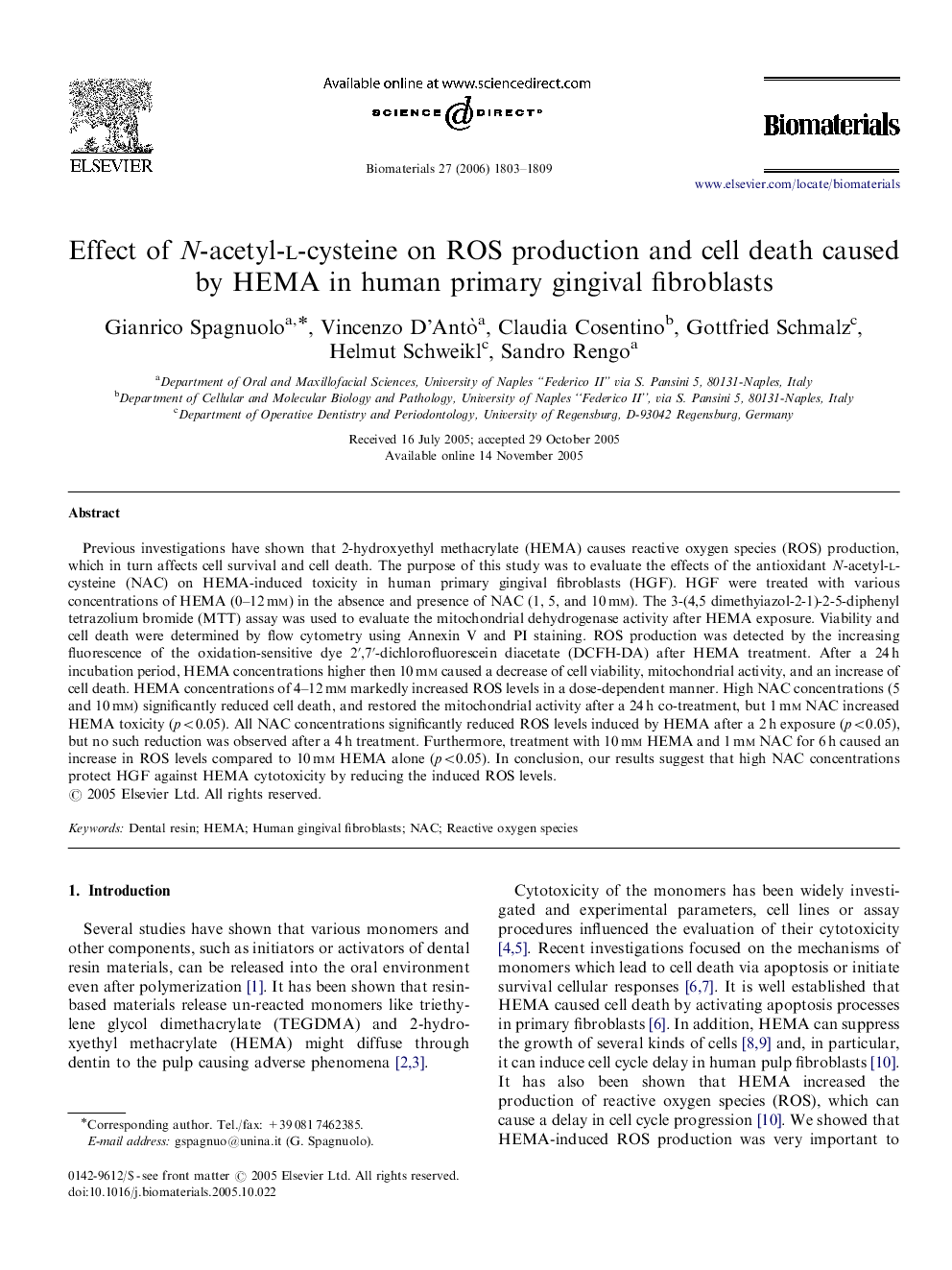| کد مقاله | کد نشریه | سال انتشار | مقاله انگلیسی | نسخه تمام متن |
|---|---|---|---|---|
| 10770 | 702 | 2006 | 7 صفحه PDF | دانلود رایگان |

Previous investigations have shown that 2-hydroxyethyl methacrylate (HEMA) causes reactive oxygen species (ROS) production, which in turn affects cell survival and cell death. The purpose of this study was to evaluate the effects of the antioxidant N-acetyl-l-cysteine (NAC) on HEMA-induced toxicity in human primary gingival fibroblasts (HGF). HGF were treated with various concentrations of HEMA (0–12 mm) in the absence and presence of NAC (1, 5, and 10 mm). The 3-(4,5 dimethyiazol-2-1)-2-5-diphenyl tetrazolium bromide (MTT) assay was used to evaluate the mitochondrial dehydrogenase activity after HEMA exposure. Viability and cell death were determined by flow cytometry using Annexin V and PI staining. ROS production was detected by the increasing fluorescence of the oxidation-sensitive dye 2′,7′-dichlorofluorescein diacetate (DCFH-DA) after HEMA treatment. After a 24 h incubation period, HEMA concentrations higher then 10 mm caused a decrease of cell viability, mitochondrial activity, and an increase of cell death. HEMA concentrations of 4–12 mm markedly increased ROS levels in a dose-dependent manner. High NAC concentrations (5 and 10 mm) significantly reduced cell death, and restored the mitochondrial activity after a 24 h co-treatment, but 1 mm NAC increased HEMA toxicity (p<0.05). All NAC concentrations significantly reduced ROS levels induced by HEMA after a 2 h exposure (p<0.05), but no such reduction was observed after a 4 h treatment. Furthermore, treatment with 10 mm HEMA and 1 mm NAC for 6 h caused an increase in ROS levels compared to 10 mm HEMA alone (p<0.05). In conclusion, our results suggest that high NAC concentrations protect HGF against HEMA cytotoxicity by reducing the induced ROS levels.
Journal: Biomaterials - Volume 27, Issue 9, March 2006, Pages 1803–1809